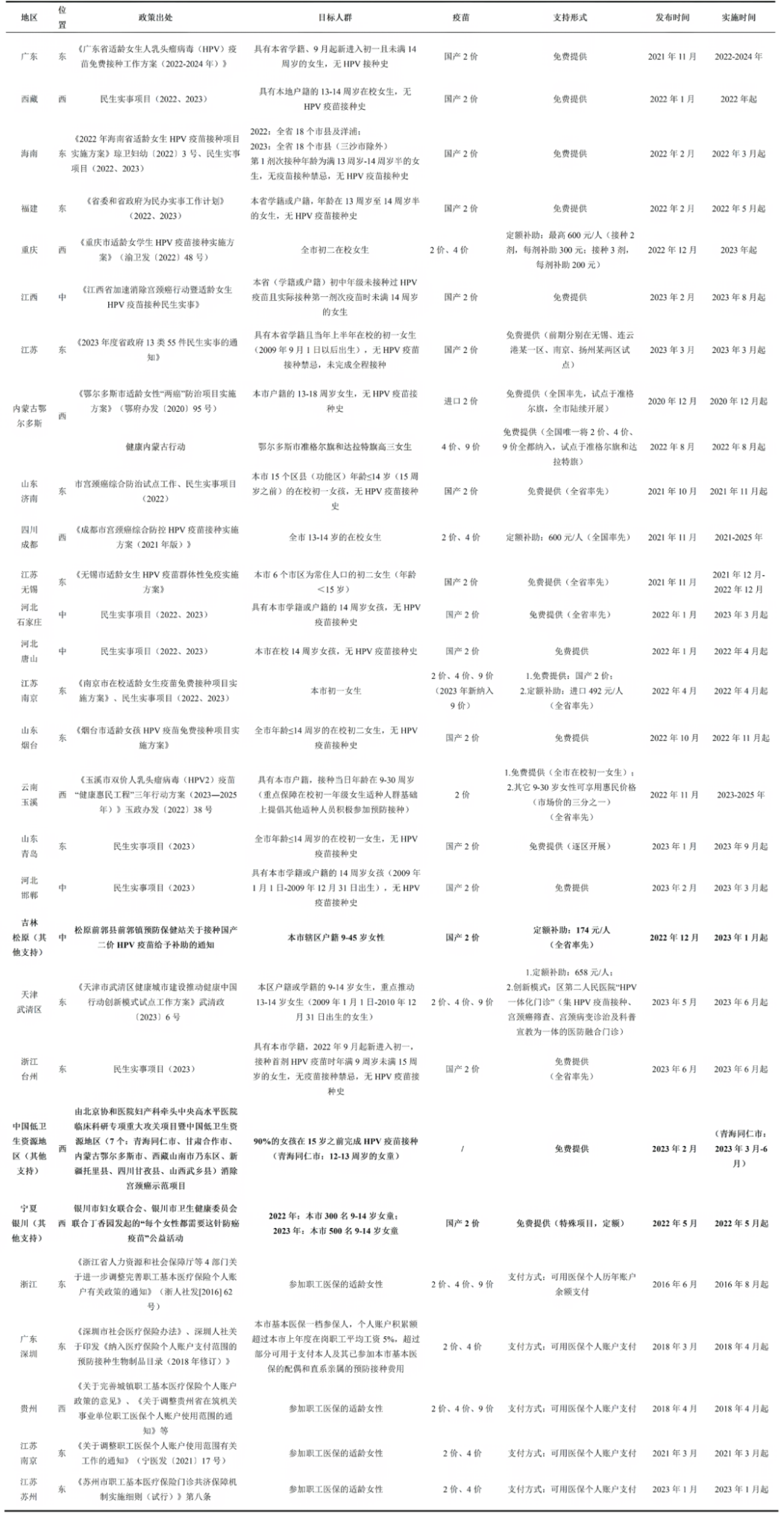Journal Article Recommendation
01
Immunogenicity and safety study of 23-valent pneumococcal polysaccharide vaccine revaccination among elderly individuals aged 60–70 years in Shanghai, China
This study, published in Frontiers in Immunology, was a single-center controlled clinical trial conducted in Shanghai to evaluate the immunogenicity and safety of revaccination with the 23-valent pneumococcal polysaccharide vaccine (PPSV23) in older adults aged 60–70 years.
A total of 330 participants were enrolled, including 220 individuals in the revaccination group (who had previously received PPSV23 at least five years prior) and 110 individuals in the primary vaccination group (who had never received any pneumococcal vaccine and were receiving PPSV23 for the first time). Immunogenicity results showed that in the revaccination group, the geometric mean concentrations (GMCs) for various serotypes increased from 1.15–21.57 μg/mL before vaccination to 1.62–33.19 μg/mL after vaccination, with all post-vaccination values significantly higher than pre-vaccination levels (P<0.0001). However, the overall geometric mean increase (GMI) after vaccination in the revaccination group was 1.62 (95% CI: 1.57–1.67), significantly lower than the 3.20 (95% CI: 2.82–3.57) observed in the primary vaccination group (P<0.0001). For all serotypes, the GMI in the revaccination group was also significantly lower than that in the primary group (P<0.0001).
In terms of safety, no serious adverse events occurred during the study. All reported adverse events were mild or self-limiting. Within 30 days post-vaccination, the incidence of adverse events was significantly lower in the revaccination group (3.18%, 7 cases) compared to the primary group (12.73%, 14 cases) (P=0.0008).
The study concluded that among older adults in Shanghai aged 60–70 years, revaccination with PPSV23 five or more years after the initial dose led to increased serotype-specific antibody levels, although the immune response was lower than that observed in first-time recipients. The safety profile of revaccination was favorable. The findings support the consideration of PPSV23 revaccination in older adults at least five years after their initial dose.
https://doi.org/10.3389/fimmu.2025.1623611
02
Protection Against Persistent HPV-16/18 Infection After Different Number of Doses of Quadrivalent Vaccine in Girls and Young Women: A Randomized Clinical Trial
This study, published in JAMA Network Open, aimed to evaluate the non-inferiority of a 2-dose quadrivalent human papillomavirus (4vHPV) vaccine schedule (administered at months 0 and 6) compared to a 2+1 dose schedule (administered at months 0, 6, and 60) in preventing persistent HPV-16 and HPV-18 infections among girls and young women aged 9 to 11 years.
The two-arm, parallel-group, non-inferiority randomized clinical trial (RCT) was conducted in Quebec, Canada, from 2013 to 2021, with efficacy analysis performed between April 2023 and June 2024. Participants self-collected baseline vaginal swabs, and the primary endpoint was the incidence of persistent HPV-16 or HPV-18 infection, defined as the presence of HPV-16 or HPV-18 DNA in two consecutive self-collected vaginal samples taken 5 to 15 months apart.
A total of 3,364 participants were randomized in a 1:1 ratio to either the 2-dose group (1,675 participants, 49.8%) or the 2+1-dose group (1,681 participants, 50.0%), with the latter receiving the 4vHPV booster at the enrollment visit. Eight participants (0.2%) withdrew immediately after randomization and were excluded from the final analysis. Among the 16,989 genotype test results analyzed, only 31 samples (0.2%) detected vaccine-targeted HPV types 6, 11, 16, or 18. In the 2+1-dose group, only one participant (0.1%) developed a time-limited persistent HPV-16 infection. The incidence of non-vaccine HPV genotypes ranged from 0% to 3.5%, with the most common high-risk types being HPV-51, -59, -39, -52, -56, and -58.
The results demonstrated that both the 2-dose and 2+1-dose schedules maintained low rates of HPV-16 and HPV-18 infection, confirming that the 2-dose schedule provides strong long-term protection—up to 13 years—against persistent HPV-16 and HPV-18 infections. Furthermore, the study indicated that administering a 4vHPV booster at 60 months did not confer additional protective benefit.
https://doi.org/10.1001/jamanetworkopen.2025.19095
03
Priority setting for improved influenza vaccines: a multi-criteria decision analysis
This study, published in Vaccine, forms a key component of the World Health Organization’s “Full Value of Improved Influenza Vaccines Assessment (FVIVA)” initiative. It aimed to explore the priorities and preferences of decision-makers in low- and middle-income countries (LMICs) regarding the adoption of improved influenza vaccines (IIVs).
The research team conducted a multi-criteria decision analysis (MCDA) in Kenya and Thailand, along with a parallel survey on IIV product preferences in 11 other countries and regions. Evaluation criteria were initially identified through literature review and expert consultation and further refined with national stakeholders during a first virtual workshop (WS1). In a second workshop (WS2), participants used the swing weighting and bisection methods to assign weights and scores to the criteria. During the model validation phase, one currently used influenza vaccine was compared against three hypothetical IIV profiles.
The MCDA in both Kenya and Thailand included seven evaluation criteria, with six shared core standards: vaccine efficacy, duration of protection, breadth of protection, risk of serious adverse events following immunization (AEFI), vaccine storage temperature requirements, and shelf life. Kenya additionally included “mode of administration,” while Thailand added “vaccine platform technology” as a criterion. Based on the comparative evaluation of four vaccine profiles, both countries rated the hypothetical “IIV-3″—which assumed 90% efficacy, 24-month protection, and 70% breadth of protection—as the most favorable option. In contrast, the currently used seasonal influenza vaccine received the lowest score in both countries.
Sensitivity analysis confirmed the robustness of the rankings across different weighting schemes. When the scope was expanded to 13 countries, the four most consistently prioritized criteria were vaccine efficacy, AEFI risk, duration of protection, and storage temperature. LMICs uniquely identified “Gavi funding support” and “cold chain requirements” as top-10 priorities—factors not emphasized by upper-middle-income countries (UMICs).
This study provides LMICs with a core set of decision criteria for evaluating improved influenza vaccines. National decision-makers can use this preliminary list as a starting point and adapt it to their specific contexts to ensure relevance and applicability. Furthermore, the MCDA approach offers a structured framework that can also support prioritization and inclusion decisions for other vaccines within national immunization programs.
https://doi.org/10.1016/j.vaccine.2025.127470
04
Aluminum-Adsorbed Vaccines and Chronic Diseases in Childhood: A Nationwide Cohort Study
This study, published in Annals of Internal Medicine, aimed to assess the association between aluminum-adjuvanted vaccines administered during infancy and the subsequent development of autoimmune, atopic or allergic diseases and neurodevelopmental disorders. Although aluminum-adjuvanted vaccines have been widely used in pediatric immunization programs for decades and are generally considered safe, public concern over their potential harm persists, while robust supporting evidence remains limited.
Using nationwide registry data from Denmark, the research team included 1,224,176 children born between 1997 and 2018 and tracked their cumulative aluminum exposure from vaccines administered before the age of two. These included the diphtheria-tetanus-acellular pertussis-inactivated poliovirus-Haemophilus influenzae type b combination vaccine (DTaP-IPV/Hib) and the pneumococcal conjugate vaccine (PCV). The study linked prescription and hospital diagnosis records to monitor the incidence of 50 chronic diseases between ages 2 and 5, encompassing 36 autoimmune diseases, 9 atopic or allergic conditions, and 5 neurodevelopmental disorders.
The findings showed no positive correlation between cumulative aluminum exposure and disease risk. For each additional milligram of aluminum, the hazard ratio (HR) was 0.98 (95% CI: 0.94–1.02) for autoimmune diseases, 0.99 (95% CI: 0.98–1.01) for atopic or allergic diseases, and 0.93 (95% CI: 0.90–0.97) for neurodevelopmental disorders. Among specific conditions, asthma was the most common outcome (28,346 cases) with an HR of 0.96 (95% CI: 0.94–0.98), followed by atopic dermatitis (22,978 cases; HR: 1.02 [95% CI: 1.00–1.04]) and allergic rhinitis (22,841 cases; HR: 0.99 [95% CI: 0.97–1.01]). For neurodevelopmental outcomes, autism spectrum disorder (4,806 cases) had an HR of 0.93 (95% CI: 0.89–0.97), and attention-deficit/hyperactivity disorder (1,580 cases) had an HR of 0.90 (95% CI: 0.84–0.96), indicating no elevated risk. The upper limits of the 95% confidence intervals suggested that for most diseases, any potential increase in risk did not exceed 10%. Sensitivity analyses—excluding the 1.2% of children who were not vaccinated, extending follow-up to age 8, and adjusting exposure definitions—yielded consistent results (HR range: 0.92–0.97).
The research team concluded that in this nationwide cohort study involving approximately 1.2 million children, although a small relative increase in risk associated with aluminum-adjuvanted vaccines cannot be entirely ruled out statistically, the findings are inconsistent with a moderate or large increase in the risk of autoimmune, atopic, allergic, or neurodevelopmental diseases associated with early-life exposure to such vaccines.
https://doi.org/10.7326/ANNALS-25-00997
05
Immunogenicity and Safety of a Quadrivalent Meningococcal Conjugate Vaccine (MenACYW-TT) Administered with Routine Pediatric Vaccines: A European Randomized Controlled Trial
This study, published in Infectious Diseases and Therapy, was a Phase III, partially modified, double-blind, randomized, parallel-group, active-controlled, multicenter trial conducted in healthy infants and toddlers. Its aim was to evaluate the immunogenicity and safety of the novel quadrivalent meningococcal conjugate vaccine MenACYW-TT (MenQuadfi®) when co-administered with routine pediatric vaccines, in comparison with another quadrivalent meningococcal conjugate vaccine, MCV4-TT (Nimenrix®).
Conducted from December 14, 2018, to May 17, 2023, across 33 centers in seven European countries, the study enrolled 1,660 healthy infants. Participants were randomized by permuted block design into four groups based on the routine use of either PCV10 or PCV13 in national immunization schedules. In countries using PCV10, participants were randomized 1:1 into two groups: Group 1 received MenACYW-TT at 2, 4, and 12–18 months (a 2+1 schedule) along with PCV10, a hexavalent vaccine, and the MMR vaccine; Group 2 received MCV4-TT on the same schedule and with the same co-administered vaccines. In countries using PCV13, participants were also randomized 1:1 into two groups: Group 3 received MenACYW-TT (2+1 schedule) with PCV13, a hexavalent vaccine, and MMR; Group 4 received MenACYW-TT at 2, 4, 6, and 12–18 months (a 3+1 schedule) along with PCV13, the hexavalent vaccine, and MMR. The primary immunogenicity endpoint was assessed by the geometric mean titers (GMTs) of serum bactericidal antibody levels using human complement (hSBA) against serogroups A, C, W, and Y, measured 30 days after the booster dose. Secondary endpoints included the proportion of participants achieving protective antibody levels (hSBA ≥1:8). A non-inferiority threshold was predefined as the lower limit of the 95% confidence interval for the GMT ratio being ≥0.6.
Results showed that MenACYW-TT demonstrated non-inferiority to MCV4-TT in serogroups C, W, and Y based on GMTs following the booster dose (C: 128.7 vs. 85.4; W: 68.2 vs. 45.1; Y: 56.3 vs. 37.8), while no significant difference was observed for serogroup A. GMTs for serogroups C, W, and Y were 1.5 to 4.5 times higher with MenACYW-TT than with MCV4-TT, while GMTs for serogroup A were slightly lower. Antibody responses in Groups 3 and 4 were comparable to those in Group 1 across all serogroups. Post-hoc analysis revealed that MenACYW-TT was non-inferior based on seroprotection rates across all serogroups (e.g., A: 92.3% vs. 89.1%, with the lower bound of the 95% CI for the difference above –10%). There was no evidence of interference with concomitantly administered routine vaccines and no identified safety concerns. Safety monitoring showed similar rates of local reactions (e.g., tenderness: 57.8% in Group 1 vs. 58.3% in Group 2) and systemic reactions (e.g., irritability: both 86.1%). Serious adverse event rates were low (2.6% in Group 1 vs. 2.3% in Group 2), and none were deemed related to the vaccines.
The study concluded that MenACYW-TT induces strong immune responses against all four meningococcal serogroups (A, C, W, Y) following both primary and booster immunization. Although initial analysis did not confirm non-inferiority for serogroup A, post-hoc analysis demonstrated adequate protection. Overall, the vaccine offers broad protection against invasive meningococcal disease (IMD) for infants aged six weeks and older.
*This study was funded by Sanofi.
https://doi.org/10.1007/s40121-025-01190-7
Content Editor: Tianyi Deng
Page Editor: Ruitong Li





